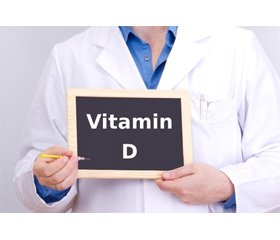Журнал «Боль. Суставы. Позвоночник» 2 (18) 2015
Вернуться к номеру
Vitamin D Content in Adolescents with Rheumatic Diseases
Авторы: Bogmat L., Shevchenko N., Matvienko E., Demyanenko M. - SI «Institute for Children and Adolescents Health Care of the NAMS of Ukraine», Kharkiv, Ukraine
Рубрики: Ревматология, Травматология и ортопедия
Разделы: Медицинские форумы
Версия для печати
Статья опубликована на с. 85
Background. Vitamin D deficiency in rheumatic diseases (RD) is one of the factors, causing the development of osteopenia and its complications (spontaneous fractures or fractures at a light load) due to its regulation of calcium metabolism. It is widely accepted that calcium is involved in the significant physiological processes in most of the cells of the organism, it also regulates secretion of a number of key hormones, enzymes and proteins. All the above serves as a reason for the prescription of preventive doses of vitamin D metabolites to ensure calcium effective absorption, when Ca–containing medicines are included in the treatment programs of patients with RD. Howe–ver, some additional biological effects of calciferol, not rela–ted to the regulation of calcium and phosphorus homeostasis, are being widely discussed recently. Due to these effects vitamin D, contained in the human body, is regar–ded as a hormonal agent. It has been established that its metabolism (1hydroxylation of 25–OH–calciferol) occurs in many tissues. Extrarenal 1.25(OH)2 acts as an autocrine calciferol agent with cell–specific functions in the system of immunity (inhibition of cell proliferation, stimulation of cell differentiation and regulation of immune competent cells). In connection with this, lack of vitamin D metabolites in patients with RD can serve as a separate risk factor for the development of immuno–inflammatory and destructive processes not only in the bone, but also in some other affected tissues. There is evidence that a genetic predisposition to the development and severity of the RD course (rheumatoid arthritis) is recorded in patients with a certain VDR–genotype. The data on the mechanisms of pathogenetic action of some osteotropic drugs (calcitonin, active calciferol metabolites, and biphosphonates) show that they can have an indirect effect on metabolic processes in RD. The rate of the bone mass loss is an indicator of systemic catabolic process and reflects the activity of inflammation. However, the issues regarding an effective influence of calciferol on the course of the disease, the impact of its deficiency on the RD pathogenesis, the types of metabolites, outlines and doses of their prescription for children and adolescents with RD are being verified.
The aim: to determine the content of the active metabolite of vitamin D in the blood of children with RD, namely: systemic lupus erythematosus (SLE), dermatomyositis (DM), juvenile rheumatoid arthritis (JRA)) as well as its relationship with the severity of the pathological process.
Materials and methods. The level of 25–OH–vitamin D3 was determined by electrochemiluminescent immunoassay (ECLIA) in 17 patients, aged 9–18 years, (mean age — 12.9 ± 4.0 years), predominantly girls (82.4 %) with JRA (58.8 %), DM (29.4 %), and SLE (11.8 %). Values, exceeding 50 ng/ml, were regarded as normal, in the range of 30–50 ng/ml (due to nutritional deficiency) as reduced, and below 30 ng/ml as low.
Results: the age of the disease onset in children was 9.3 ± 2.5 years, and duration of the disease averaged 2.7 ± 1.3 months. The disease activity corresponded to the 2–3 degrees. Glucocorticoid therapy received 58.8 % of the patients, cytostatics (cyclophosphamide and methotrexate) were given to 70.6 % of patients, all of our patients were treated with calcium medicines containing vitamin D (daily dose 200 IU). The level of 25–OH–vitamin D3 in all the patients was reduced, while in 17.6 % their findings were above 30 ng/mL, and in 82.4 % its absolute deficiency was registered. Blood values of 25–OH–vitamin D3 came to 22.9 ± 2.4 ng/mL (16.1–32.5 ng/mL), they correlated with age of our patients(r = 0,89, p < 0.01) and were not dependent on the RD nosology, as well as on immunological and biochemical indices of the disease activity.
Conclusion. Investigations, carried out in the study, have shown a pronounced deficiency of the main meta–bolite of vitamin D in children with RD, despite the intake of its medications in the combined treatment. This necessitates an additional prescription of the D3 active metabolite for children with all key RD diseases, especially for the younger children. According to the current European re–commendations, an additional dose of D3 for children with RD should reach 2–4 thousand in IU.

